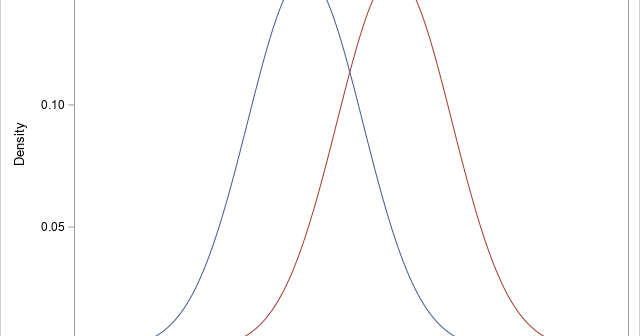The DO Loop
Statistical programming in SAS with an emphasis on SAS/IML programs
What is Cohen's d statistic and how is it used? How can you compute it in SAS? This article gives some history behind Cohen's d statistic. It shows how to compute the statistic in SAS for the difference in means between two independent samples. It shows how to estimate a

SAS provides procedures to fit common probability distributions to sample data. You can use PROC UNIVARIATE in Base SAS or PROC SEVERITY in SAS/ETS software to estimate the distribution parameters for approximately 20 common distributions, including normal, lognormal, beta, gamma, and Weibull. Since there are infinitely many distributions, you may

Many common probability distributions contain terms that increase or decrease quickly, such as the exponential function and factorials. The numerical evaluation of these quantities can result in numerical overflow (or underflow). This is why we often work on the logarithmic scale: on the log-scale, the numerical computations for equations such

Suppose you measure data weekly. According to the ISO standard, weeks are measured in the range 1-53, where most years have 52 weeks, but occasionally there is a "leap week." (The WEEK function in SAS implements the ISO standard to find the week-of-the-year for any date.) The heat map to

Dating can be a challenge. No, I'm not talking about the process of finding a soulmate. I'm talking about managing days, weeks, months, and years in statistical analyses and reports! One challenge is how to number the weeks of the year. Because there are seven days in a week, 52

I follow several data visualization experts on social media. Sometimes, I see a graph that I struggle to interpret. When that happens, I ask myself whether there is a simpler and more effective way to visualize the data. Recently, I saw an example of using a "horizon plot" to visualize
